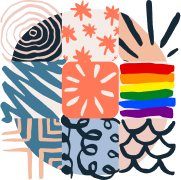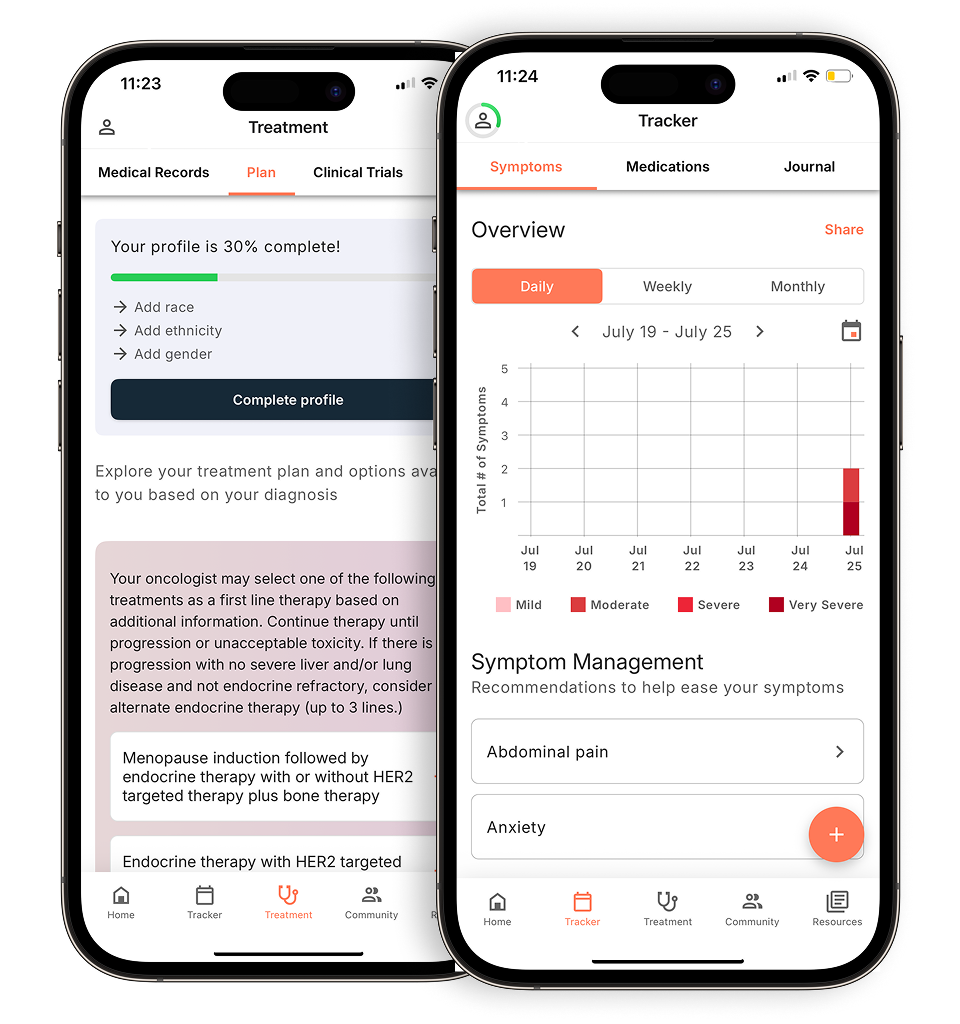April is National Minority Cancer Awareness & Health Month, an initiative led by the National Institute on Minority Health & Health Disparities to highlight the importance of improving health outcomes for minority communities and addressing related health disparities. This month, we support the goal of this initiative by helping to raise awareness about these health disparities and highlighting organizations and initiatives that are addressing them.
Breast cancer is the most common cancer globally, making up about 12.5% of new cancer cases each year. Of the more than 300,000 new breast cancer cases diagnosed each year in the U.S. alone, minority communities are disproportionately affected by the disease. Healthcare, treatment access, and outcomes vary greatly patient to patient depending on factors such as race and ethnicity, income and insurance status, immigration status, gender, sexuality, and disability. Continue reading to learn more important statistics about breast cancer disparities and discover organizations tackling the problem.
Black women
Data from the American Cancer Society reports that Black women, though they have a slightly lower incidence rate of breast cancer, have a 40% higher chance of mortality from breast cancer than white women. This is due in part to an elevated risk of Triple Negative Breast Cancer (TNBC), an aggressive form of breast cancer that often affects younger women, and later-stage diagnoses among the Black patient population.
Another pressing issue for Black breast cancer patients is the lack of racial diversity and representation of Black patients in clinical trials. In fact, Black Americans only make up 5% of the patients in clinical trials for cancer drugs, meaning they don’t have as much access to the latest treatment innovation. Luckily, there are many great organizations with missions to support Black breast cancer patients and address the disparities faced by this community. For example, Trials of Color advocates for inclusive clinical trials and works to close the care gap for Black cancer patients.
For more information about organizations that support Black breast cancer patients and survivors, read our previous blog post.
Hispanic women & Latinas
Although Hispanic women and Latinas are 28% less likely than white women to develop breast cancer, they are 30% more likely to be diagnosed at a later stage and die from the disease. In fact, breast cancer is the leading cause of cancer-related deaths among Hispanic/Latin women, due to both genetic and social factors.
Studies show that Hispanic/Latin American women are less likely to receive genetic testing for BRCA mutations than other populations, despite the fact that women in Latin American regions have higher rates of BRCA gene mutations overall. In addition to this genetic predisposition, low mammography screening rates and other social determinants of health contribute to the disparities in breast cancer within these communities.
Despite these disparities, there are organizations designed to support this specific underserved population. The Latina Association for Breast Cancer is a 501(c)(3) non-for-profit that’s dedicated to empowering Hispanic/Latina breast cancer survivors by providing education, support, and resources for patients from diagnosis through survivorship.
Asian American & Pacific Islander women
Asian American and Pacific Islander (AAPI) women have the lowest rates of breast cancer incidence and mortality of any racial or ethnic group in the U.S., but the breast cancer risk for this population is often underestimated. There are risk factors specific to AAPI women that are important to take into account. For instance, immigration status affects breast cancer risk as there are higher rates of breast cancer among AAPI women living in the U.S. compared to those living in Asian countries. This is due in part to the adoption of Western lifestyle and diet.
Studies show that women of Asian descent typically have more dense breast tissue which is a risk factor for breast cancer. As such, the risk of developing breast cancer peaks between the ages of 40 and 50 for AAPI women, ten years younger white women. The fact that AAPI women are at higher risk of early-onset breast cancer and are more likely to have dense breast tissue should factor into screening guidelines for this community, but AAPI women have some of the lowest screening rates of any population.
The National Asian Breast Cancer Initiative is a non-profit organization working to address the unique challenges AAPI women with breast cancer face and challenge the misconception that “Asian women don’t get breast cancer.” The initiative advocates for Asian breast cancer policy and best practices through their annual U.S. Asian breast cancer awareness campaign.
American Indian and Alaskan Native women
Most research suggests that American Indian and Alaskan Native (AI/AN) women have a lower overall incidence rate of breast cancer than white women, with approximately 111 cases per 100,000 women per year, compared to approximately 133 cases per 100,000 women per year respectively. In fact, AI/AN women have the lowest risk of breast cancer of all racial or ethnic groups, at about 7%, compared to the 12% incidence rate of white and Black women. At the same time, however, AI/AN women have a higher mortality rate from breast cancer than white women, second only to Black women.
Another study found that the decline in breast cancer cases over time has been unequal among populations, with breast cancer rates falling faster among white women than Indigenous women. While breast cancer mortality rates for all other racial and ethnic populations have declined steadily since 1989, the mortality rate of AI/AN breast cancer patients has remained steady. This disparity could be due to geographic factors (i.e. living in rural areas) and lack of access to adequate healthcare, screening programs, and the latest innovation in cancer treatments.
To help address the disparities in cancer care and outcomes for indigenous people, Partnership with Native Americans created a health services support program that serves hundreds of reservations and nearly 250,000 Native Americans each year. The services include a focus on preventative care like cancer screenings, immunizations, and health education.
Women with disabilities
According to the CDC, 36 million women in the U.S. have a physical disability. However, research consistently shows that women with disabilities are less likely to have mammogram screenings that follow recommended guidelines, though they are just as likely to develop breast cancer as women without physical disabilities. Lack of adherence to recommended screening guidelines can result in later stage breast cancer diagnoses and higher risk of mortality for women with disabilities.
Reasons for fewer screenings among this community include lack of access to handicap-accessible screening facilities and machines, financial barriers, and inadequate care by the patient’s healthcare provider. In an effort to address these barriers, the American Association on Health and Disability (AAHD) and Susan G. Komen for the Cure launched Project Accessibility USA to provide quality breast health services to women with disabilities to close the care gap for this medically underserved population.
Breast cancer in the LGBTQ+ community
A concern for members of the LGBTQ+ community is the risk of cancer associated with taking hormone therapies. Though the risk is small, there’s a slight increase in cancer risk for transgender patients taking hormone therapies compared to cisgender patients. Transgender women who have undergone hormone therapy carry a slightly higher risk of breast cancer than cisgender men, but their risk is still lower than that of cisgender women.
The lack of gender-affirming care also plays a role in screening rates among the LGBTQ+ community. The American Cancer Society cites fear of discrimination, low rates of health insurance, and prior negative experiences with healthcare providers as reasons LGBTQ+ patients may delay preventive care like mammogram screenings.
Members of the LGBTQ+ community face unique challenges with a cancer diagnosis. The National LGBT Cancer Network works to improve the lives and health outcomes of these patients by advocating for LGBTQ+ inclusion in cancer research, training healthcare providers to offer inclusive care, and educating the community about cancer risk. The Network also offers peer support groups that provide a welcoming space for LGBTQ+ cancer patients and survivors.
Breast cancer in men
According to the American Cancer Society, male breast cancer accounts for 1% of all breast cancer cases in the U.S., with an estimated 2,700 men diagnosed with the disease each year. Though this is a small proportion, male breast cancer patients often face worse health outcomes because research into male breast cancer is underfunded and male patients don’t have the same access to treatment innovation through clinical trials.
The Male Breast Cancer Global Alliance (MBCGA) is a non-profit organization that aims to improve outcomes for people affected by male breast cancer by promoting education, advocacy, and research. This organization is dedicated to raising awareness about male breast cancer and ensuring that men with breast cancer receive appropriate care and support.
To learn about male breast cancer and associated risk factors in more depth, read our blog post from Rare Diseases Day.
Personalized support for real care decisions
Understand your diagnosis, explore clinical trials, and track symptoms--all in one place.
Get started
Compare treatments, prepare for appointments, and track side effects—all in the app
Built for your diagnosis, Outcomes4Me gives you the tools to make confident, informed decisions—right when you need them.
Continue in app






